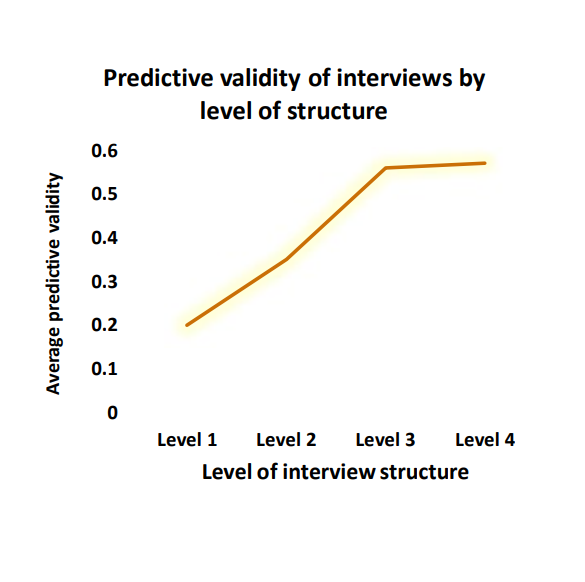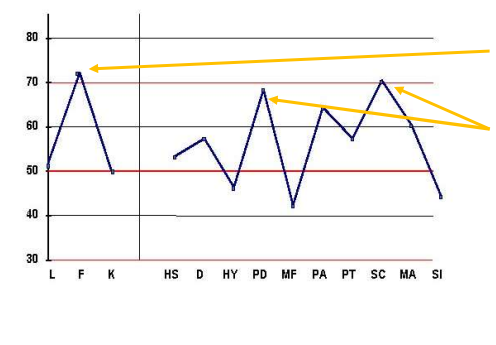Personality Psychology: PERSONALITY ASSESSMENT
1/25
Earn XP
Description and Tags
MBB2
Name | Mastery | Learn | Test | Matching | Spaced |
|---|
No study sessions yet.
26 Terms
Domains of personality assessment
Organisational psychology
Clinical psychology
Educational psychology
Counselling psychology
Forensic psychology
Assessment, and personality assessment in particular, is a core element of psychological practice
Measuring the unmeasurable?
Personality assessment faces serious challenges
Assessment appears to be subjective
There is no infallible source of information about the person
The ‘object’ knows it is being measured
Personality traits are not directly observable
Measurement quality & confidence
The degree to which personality is measured well is captured by two main concepts
Reliability: does the measurement yield consistent, dependable & error-free information
Validity: does the measurement assess what it is intended to assess & is it useful
Reliability: three varieties
Internal consistency
Inter-rater reliability
Re-test reliability
Three kinds of measurement error: within the test, between testers, and over time
High reliability = high consistency = low error
Internal consistency
Do the components of the test all cohere?
All test items should correlate with one another
Inter-rater reliability
Does the test provide the same information about the person when different people administer it?
Re-test reliability
Does the test yield similar scores when it is administered to the same person on different occasions?
Validity
Validity has two components
Does the test measure what it is intended to measure?
Content validity
Convergent validity
Discriminant validity
Does the test provide practically useful information
Predictive validity
Reliability & validity
So for a good test of trait X …
All items should intercorrelate
The same score should occur whoever gives it
People should get similar scores when they do it twice
All items should clearly relate to the meaning of X
It should correlate strongly with other measures of X
It should not correlate with measures of Y & Z
It should correlate with things that X is related to
Reliability & validity are both essential, but if reliability is low, validity cannot be high: a test full of measurement error can’t predict anything
Reliability & validity
Unreliability exists when there is inconsistency in what the test measures (scatter)
Invalidity exists when the test does not measure what it should (targeting the bullseye
Kinds of personality measurement
Many different modes of personality assessment
Interviews
Personality inventories
Projective tests
Implicit personality
Interviews
Interviews are rarely used in personality assessment
Time-consuming & labour-intensive
Subjective (i.e., poor inter-rater reliability)
Interview interactions are prone to biases
Halo effect, self-fulfilling prophecy, confirmation bias
Sometimes they are used for assessing attributes where the person may not be a reliable informant, and/or where interpersonal & nonverbal behaviour may be revealing
Personality disorder
Interviews
Forms
Structured
Unstructured
Semi-structured
Combines structure & flexibility
‘Provocative’
Type A personality

Inventories
Self-report personality tests
Composed of multiple items Items form scales
Omnibus tests with many scales
Single-scale tests
Generally, at least 10 items per scale
Variety of response scales
True/false
Likert scales (strongly disagree strongly agree)
Inventory development
Item generation
Pilot testing
Item analysis
Check internal consistency
Factor analysis
Select optimal items for final scales
Re-test on new sample
Correlate with other tests and prediction criteria
Develop norms to allow score comparison
Problems of self-report
Inventories are vulnerable to response biases & limitations of self-knowledge
Longer tests include validity scales to check for this
Lie scales (faking good)
Infrequency scales (faking bad, random responding)
Defensiveness scales (subtle guardedness)
Inconsistency scales (carelessness, random responding)
Example: the MMPI
Developed in 1940s for comprehensive clinical personality assessment
10 clinical scales, 3 validity scales; 566 items
Scale development by selecting items that best differentiated known groups
Scale scores converted to T-scores (M=50, SD=10)
Interpretation of scale profiles
MMPI profile
Check validity scales High F scale
Identify peaks (T>65) PD & SC scales
Inspect ‘atlas’ for profile code 48 code

MMPI 4/8 code
odd, peculiar
non-conforming and resentful of authority
problems with impulse control
excessive drinking and drug abuse
Deep feelings of insecurity;
avoids close relationships, impaired empathy;
withdraws into fantasy or strikes out in anger as defence against being hurt
most common diagnoses are schizophrenia (paranoid type), schizoid personality & paranoid personality
Projective tests
Developed to bypass problems of self-report
Aim to penetrate to deeper levels of personality
Dynamics, object relations, core motives
Allied with the psychoanalytic approach
Involve deliberate ambiguity & open-endedness
Ambiguous stimuli
Unstructured responses
Based on the assumption that personality will be ‘projected’ onto stimuli without defensive
Thematic Apperception Test
Developed by Henry Murray
Idiographic approach
Series of monochromatic images
Person tells extended story about what is happening in the picture
Responses coded for repeated themes in the stories: motives attributed to protagonists, interpersonal conflict, ways of handling conflict etc
Few widely accepted scoring conventions – a recipe for inter-scorer unreliability – but …
Rigorous scoring systems for defence mechanisms
Denial & projection (Cramer)
System for scoring motives
Need for achievement (McClelland); does not correlate with self-reported achievement striving
Rorschach Test
Evolved from 19th Century parlour game
Series of symmetrical inkblots
Person says what object(s) the person sees (the “percept”) and what aspects of the blot lead them to see it
Responses are scored on numerous dimensions
Number of distinct precepts
Complexity/integration of precepts
Content themes
Plausibility of precepts (i.e., are they recognizable)
Response to colour
Use of shading, blank space
Critiques of projective tests
Time consuming
Encourages ‘wild’, unconstrained interpretation
Low inter-scorer reliability
Predictive validity is generally weak compared to self-report tests
Often there is little ‘incremental validity’ beyond self-report tests
Implicit tests
New form of testing based on rapid, ‘automatic’ responses
In principle difficult to fake & less susceptible to response bias
Early evidence suggests these methods have promise
Example: Implicit Association Test (IAT)
Four sets of words
Self: me, my, mine
Not-self: they, them, their
Extraversion: active, confident, outgoing
Introversion: aloof, reserved, serious
Two ‘blocks’ of trials where person must rapidly classify words into different pairings of words
If ‘self’ is more associated with ‘introversion’, classification will be quicker for the LEFT block
Quicker classification for the RIGHT block if ‘self’ is associated with ‘extraversion’
